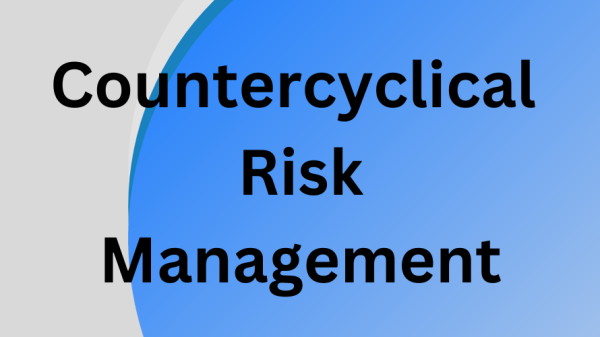By Pascal vander Straeten August 01, 2023
It is now widely acknowledged that, by nature of their design, the models developed by neoclassical economists to simulate the economy, from models of financial risk used by banks to the macroeconomic models used by policymakers, failed to predict or even accurately explain the events of the 2007-2008 Global Financial Crisis. In fact, they also contributed to the crisis by creating a false sense of security, namely one related to so-called optimal market equilibrium.
Optimal market equilibrium is the wrong objective
But, we have been told a lie: the state of optimal market equilibrium is an entirely imaginary state, and so no such invisible hand exists. Such a hypothetical state would reflect complete satisfaction and happiness on the part of every individual on the market. It would render any further entrepreneurial action superfluous, as action is prompted by the desire to change one’s current situation. In reality, individual value preferences continuously change. New, more efficient utilization of factors of production is continually being discovered. Entrepreneurial innovation continually identifies new future demands.
An essential foundation in risk management, and in particular concerning market risk management is the general equilibrium theory. Indeed, the Capital Asset Pricing Model (CAPM), which was developed in the mid-1960’s, utilizes several hypotheses about investor and markets behavior to give a set of equilibrium conditions that allow us to forecast the return of an asset for its level of systematic (or nondiversifiable) risk.
And, the market equilibrium in the CAPM is an important construct to understand the changes that occur on the market. Indeed, the process of price formation and the actions prompted by it are deemed to tend to move the market progressively closer toward the condition of market equilibrium. As value preferences, alter and discovery of more efficient ways of production occur, so does the potential state of market equilibrium. Actors on the market perform actions that again move the market data closer to this equilibrium which, however, remains in constant flux.
However, believing far too credulously in optimal market equilibrium and an invisible hand, the Federal Reserve Bank failed to predict the subprime crisis. The principal models it used posited that markets are always in instantaneous balance, so how could a disaster occur? But after the global financial crisis exploded, the Federal Reserve Bank dropped its high-tech invisible-hand economic models and responded with full force to provide support to the economy. The powerful invisible-hand metaphor refused to let go. It assured German Chancellor Angela Merkel, even if she was raised as a child in East Germany under Marxism-Communism that slashing fiscal budgets and deregulating labor markets would bring the euro crisis to an end. Based on thinking dimmed by some invisible-hand fancy, European political authorities have again and again been a day too late and a euro short in responding to market gales. Subsequently, they made the euro crisis far worse than it had to be.
Financial risk management could learn a lot from time crystals
For that reason, the financial markets industry could learn a lot from the quantum world, and in particular from the latest developments as they relate to time crystals. This does not mean that financial markets should directly mimic quantum physics, or adopt the formalism of quantum mechanics. Instead, financial markets should be viewed as a quantum system on its terms, with its versions of duality, measurement, uncertainty, entanglement, and so on.
The world around us is formed from non-equilibrium conditions, such as the structure of the universe, turbulent flow, life itself, and social activities. Research on such processes and systems may assist in identifying the rule of randomness and acknowledge the importance of the role of correlated degrees of freedom in the organization and transport of energy and matter. Such quest for universality is motivated by a hope of identifying emergent principles governing non-equilibrium systems.
Different regions of a system are so unlike one another that they cannot reach equilibrium. It turns out that these highly disordered, non-equilibrium systems can both sustain interesting quantum dynamics over long time periods and lead to totally new types of quantum matter. In these systems, the push toward equilibrium driven by interactions among particles is curbed by disorder, slowing down the scrambling of quantum information.
In everyday life, if you put milk in your coffee, it mixes, and you can measure an average quantity to show that the coffee is more creamy. But you can’t measure what happens with every particle. The scrambling of information that takes place as a quantum system moves toward equilibrium is effectively irreversible. The initial data still exists, but when you let the system evolve, all the correlations among particles that account for this initial information are mixed over the entire sample in a very complicated way that you can never retrieve. While most systems we know behave in this way, recent breakthroughs in atomic physics have allowed us to produce systems that do not equilibrate even over in nite time periods. Some networks scramble information quickly, and some scramble it slowly.
However, while equilibrium or stability never exists, we humans have always tried to reach that kind of ideal balance. But, we should review our approach and change it. Indeed, for the last half-century, we have been exploring equilibrium matter. Now, with the discovery of time crystals the doors are starting to open toward the exploration of a whole new landscape of non-equilibrium matter.
Indeed, Harvard scholars discovered in 2012 a new state of matter, dubbed a time crystal, a find that brings about new avenues of research and potentially paves the way for the development of quantum sensors and quantum computers. Companies such as NEC Corp, Mitsubishi, Nokia Bell Labs, Alphabet Inc.’s Google, Microsoft Corp., Rigetti, Airbus, Lockheed Martin, D-Wave, Raytheon, Amgen, Biogen, and IBM Corp. are in an advanced stage for the development of quantum computers, which they suggest will have future applications in cybersecurity and artificial intelligence.








